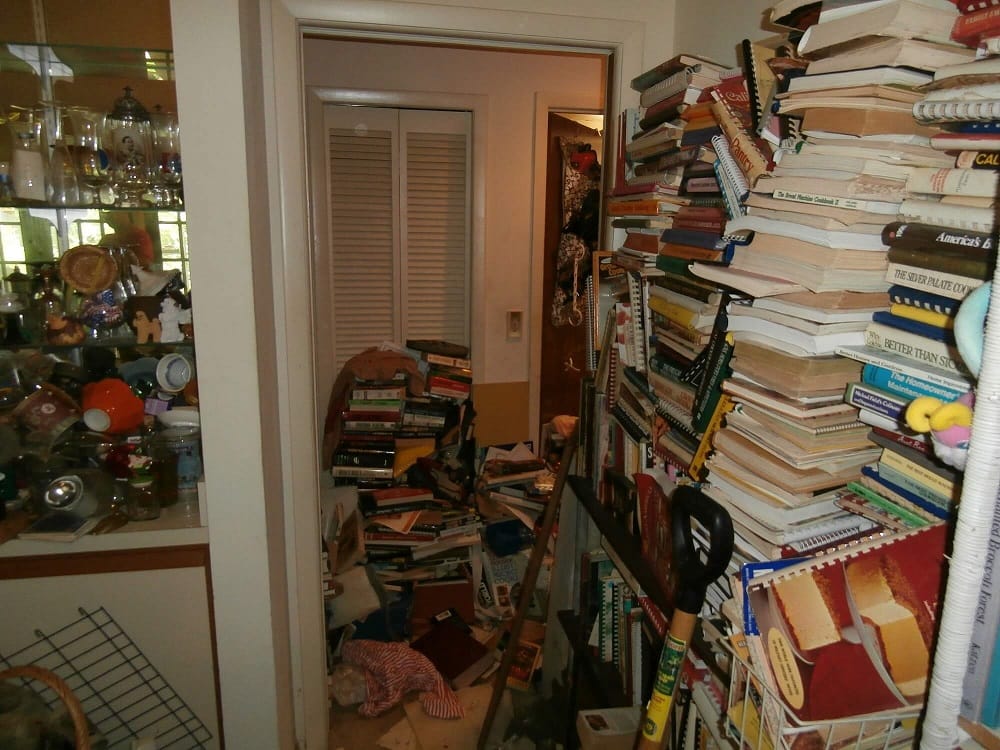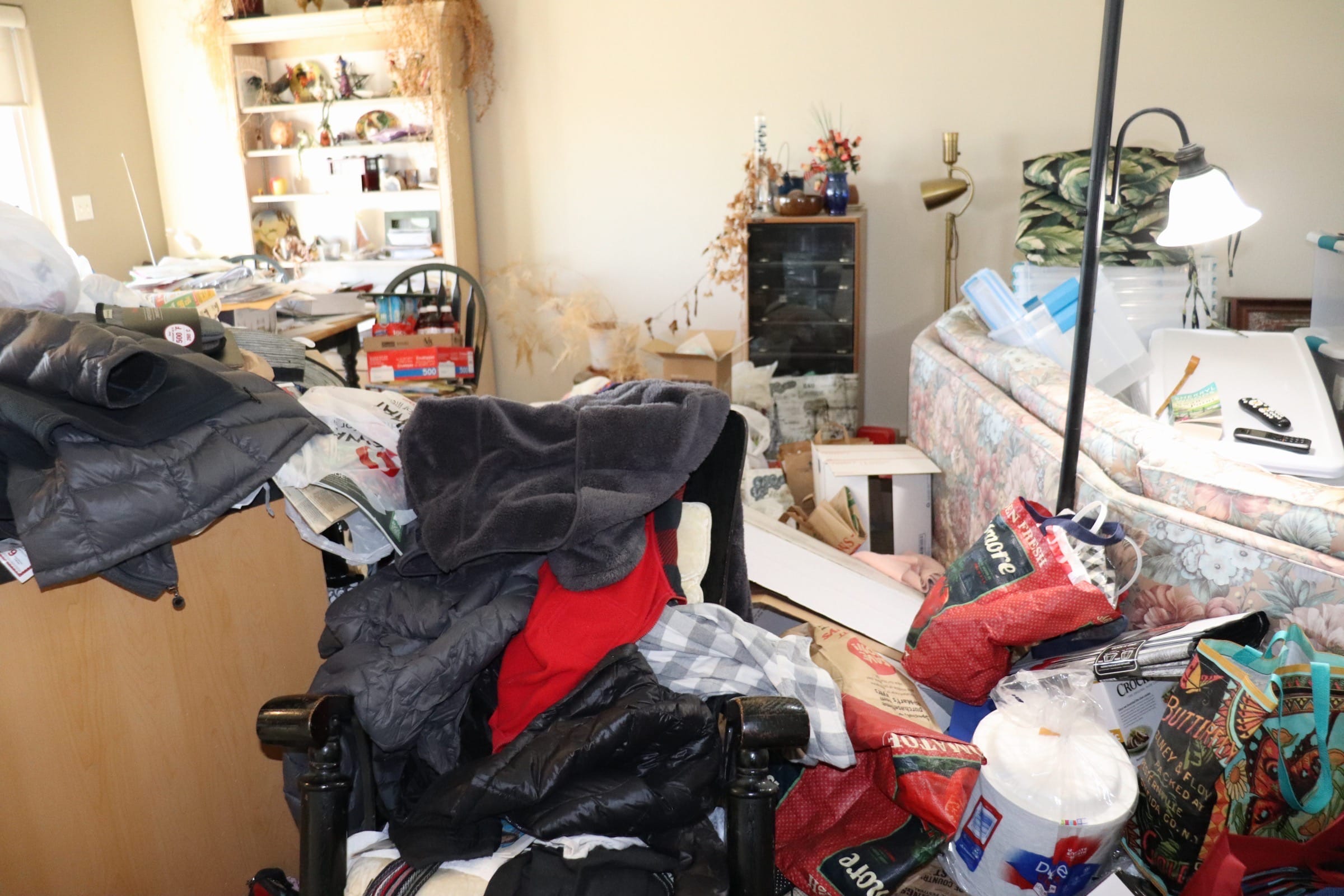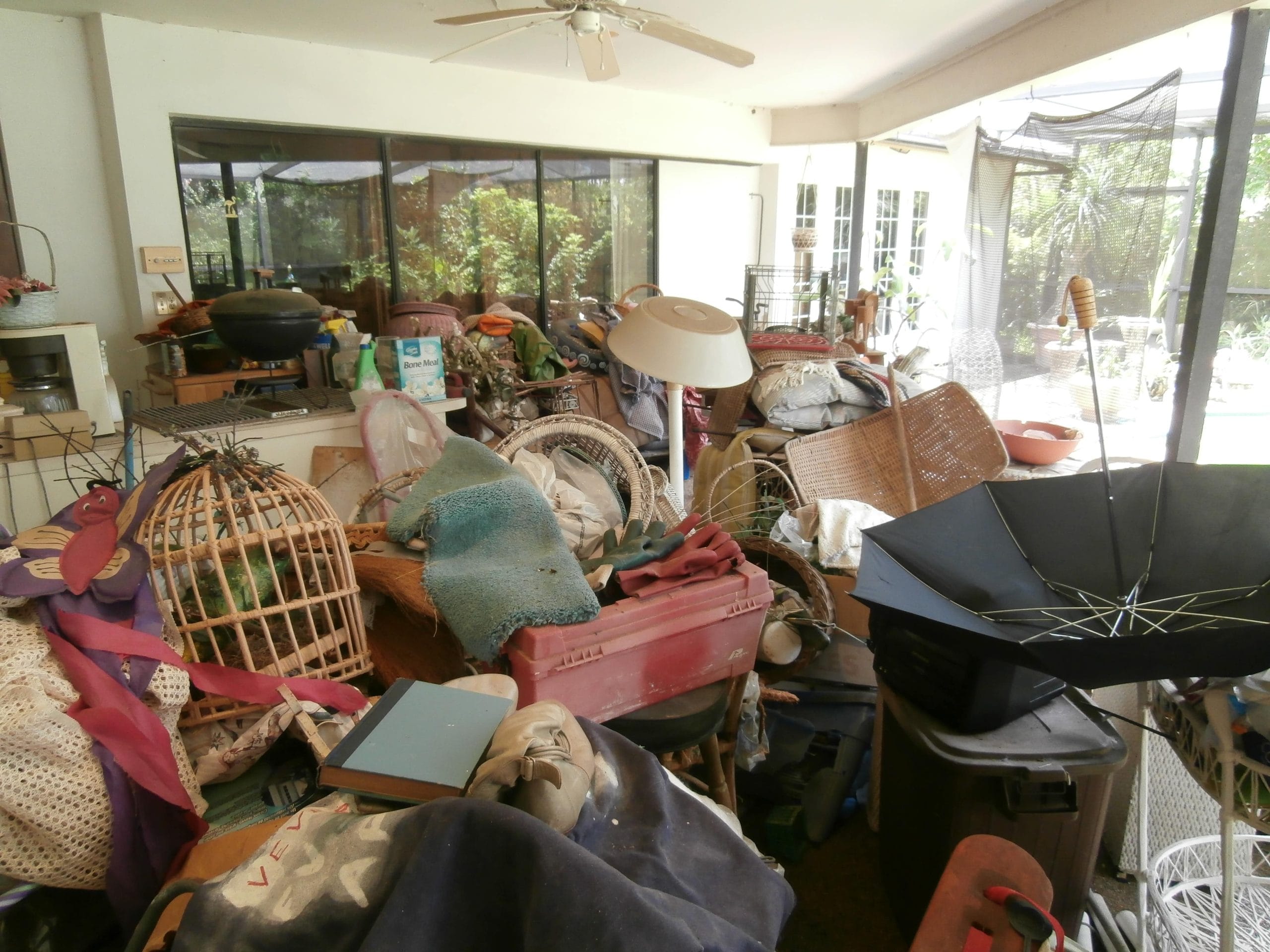There are approximately 19 million people in the United States with a hoarding disorder. Compulsive hoarding is defined by psychiatrists as the excessive accumulation of items and refusal to discard anything. It has also been found that 50% of hoarders have a major depressive disorder and 48% have social phobia or anxiety.
As an outsider looking in, it is easy to label hoarders as lazy, slobs, and more. As awareness of this problem grew, people began asking the question, is hoarding a mental illness? The short answer is yes. We are going to delve into this mental illness, recognition of the problem, and how to undertake a cleanup of the home.
PackRat vs. Hoarder
What is the difference between a packrat and a hoarder?
A packrat is a person who obsessively collects or hoards things. The term often refers to someone who has a large collection of unnecessary items. The packrat claims they save things because the item may serve a useful purpose in the future.
The packrat recognizes their need to declutter from time to time. They may need assistance sorting things out, but they understand the need to eliminate excess accumulation.
A hoarder is unable to part with anything, no matter how unuseful it may be. They are emotionally unable to cope with the removal of any item, regardless of its insignificance, from their home. Hoarders often also suffer obsessive-compulsive personality disorder (OCPD), obsessive-compulsive disorder (OCD), Attention Deficit hyperactivity disorder (ADHD), and depression.
How is Hoarding Defined?
For many years, there have been studies and debates over what hoarding actually is. Is it an extreme form of OCD? Is it just someone who collects items and clutter? Or is it a mental illness on its own? Defining hoarding is an important part of understanding a hoarder and what they are going through. It is not simply a want to collect items. No hoarder enjoys being surrounded by waste and trash or have their standard of living impaired because of all these items, but they all feel that they have to. Understanding hoarding is an important part of helping a hoarder seek help.
Since 2013, hoarding has been classified as its own mental disorder. Hoarding is a Diagnostic and Statistical Manual of Disorder (DSM) classified disorder. In 2013 when the latest DSM was released, DSM-V, for the first-time hoarding was classified. In DSM-V it is defined as a person who, excessively save items that others may view as worthless. They have persistent difficulty getting rid of or parting with possessions, leading to clutter that disrupts their ability to use their living or work spaces, and occurs in approximately 4% of the population.
Though at its core, hoarding is the collection of these items, it grows to so much more. Hoarding can be defined further by symptoms that come with it such as obsessive thoughts, embarrassment, anxiety, and depression. Hoarding can cause obsessive thoughts about all things, not just the items they hoard. This makes any decision a tough one for them, including discarding items. Their obsessive thoughts can lead to everyday hardships. Making even the smallest choices becomes a chore for them and often leads to stress and anxiety about the decisions they have to make.
Packrat Definition
A packrat is a person who obsessively collects or hoards things. The term often refers to someone who has a large collection of unnecessary items. The packrat claims they save things because the item may serve a useful purpose in the future. The packrat recognizes their need to declutter from time to time. They may need assistance sorting things out, but they understand the need to eliminate excess accumulation.
Are you a packrat or a hoarder?
The main difference between a hoarder and a packrat is a blindness ti their situation. A packrat recognizes a need to clean and un-clutter however infrequently while a hoarder does not.
Is Hoarding a Mental Illness?
Hoarders do not see their behavior as unusual. Hoarding was not recognized professionally as a mental illness until 2013. It was then that the Diagnostic and Statistical Manual of Mental Disorders began including severe hoarding as a disorder. The criteria for hoarding disorder is someone who acquires unmanageable and possibly hazardous amounts of items that are either useless or have limited value. Despite the items lacking importance, the hoarder suffers extreme distress if the item is thrown away.
When two or more family members are hoarders, they often have different forms of the same gene on chromosome 7. In more than 80% of people who are hoarders, they have another relative with similar problems.
In addition to genetics, hoarding is also related to ADHD, anxiety disorder, Tourettes syndrome, neurodegenerative disorders, clinical depression, and dementia. The psychological reasoning is that the accumulation of objects fills an emotional void the person feels.
Comorbid Disorders
Oftentimes, when a person has a hoarding disorder, there may also be some other mental health disorders contributing to their condition, too. One of the most common of these is depression; even if a person does see that theres a problem, depression may rob them of the energy to deal with it. Attention-deficit hyperactive disorder may also contribute to hoarding, as a person may have trouble focusing for long enough to tackle the problems that are piling up.
Anxiety can also be a serious contributor to hoarding, as a person may have the irrational fear that if they get rid of any of their stuff, something terrible will happen. You may also be surprised to learn that hoarding also shows up alongside obsessive-compulsive disorder. Rather than the common misconception that OCD causes a person to obsessively clean, its an anxiety-based disorder that can cause a variety of compulsions, including hoarding.
Complications
Hoarding can cause a variety of complications aside from the basic problems the condition triggers. For one thing, a person with hoarding may experience an increased risk of falls due to the number of tripping hazards around the home. If they do fall, they may get injured or trapped by piles of items falling on top of them.
Most significantly of all, a person with hoarding may become isolated and may experience more conflicts with their family. They may feel as though everyone in their life is attacking them or turning against them, and they may withdraw, which can increase hoarding tendencies. They may struggle at work, and if they rent a house, they could even face eviction.
When to Get Help
It can be hard to know when to seek help for a hoarding problem. After all, at what point does simple messiness or a need for a good deep clean transition into being a mental disorder? As a general rule, that line comes when the person in question can no longer control their hoarding tendencies.
If you notice that you or your loved one becomes extremely upset, especially to an irrational degree, when the topic of purging some items comes up, it may be time to seek help. Its also a good idea to get help if living conditions in the home become dangerous or unsanitary. Although it may feel like a betrayal of your loved one, getting them the help they need can vastly improve their quality of life.
The Hoarder House
People with a hoarding disorder feel anxiety if they throw anything away. This results in massive piles of newspapers, magazines, old clothes, tools, photographs, food, boxes, bags, and more throughout their home. Over time the living space becomes a walkway between stacked items.
Hoarders are sometimes compulsive buyers. They may be unable to bypass a sale and save items such as empty containers and other items of no value. This includes travel brochures, flyers, catalogs, and more. The hoarder views the item as something that may become useful or valuable. The massive accumulation of things presents a fire hazard in the home.
Hoarder Behaviors
If someone exhibits any of the following behaviors they may have a hoarding disorder:
- Unable to throw away items they own
- Experience extreme anxiety when trying to dispose of items
- Unable to organize or categorize their possessions
- Indecisive about where to keep things
- Experience embarrassment, distress, or feel overwhelmed by their possessions
- Become suspicious of anyone who touches their belongings
- Display obsessive behaviors such as checking their trash for items accidentally thrown away
- Unusual fear of running out of something or having a need for it in the future
- Have functional impairment such as health hazards, financial problems, marital or family discord, social isolation, or loss of living space
The inability to organize or discard items causes hoarders to lose functional living space. They often fail to maintain their home, leaving non-working maintenance items without repair. This is due to a fear of insiders entering their homes. When trying to clean up a hoarders home, the process is overwhelming and can be dangerous. The home often contains mold, rodent droppings, animal waste, old food, and more. When someone suffers from this mental illness, using a cleanup service is a good choice for a safe, professional cleanout of an area that may contain hazardous material. They have the proper gear and tools to handle the job safely.
Levels of a Hoarding Disorder
Hoarding is not a one size fits all disorder. The levels of hoarding determine the severity of a persons mental illness. The National Study Group on Compulsive Disorganization put together a scale that includes five levels of hoarding.
Level 1
At this level, the person shows very few signs they have a disorder. The clutter level is light, doors and stairways are accessible, and there is a maximum of three areas of animal waste in the home. The person may purchase a large number of items they do not need or have trouble throwing items away.
Level 2
Level 2 hoarders may avoid inviting people into their homes or display embarrassment at their homes condition. One exit from the home is blocked, an appliance is not working, three are malfunctioning heating, cooling, or ventilation systems. Two or more rooms will only have narrow pathways due to clutter. Other indicators include pet odor and waste, evidence of rodents, overflowing trash cans, and food preparation areas that are dirty.
Level 3
When the hoarder reaches level three they will have clutter outside the home. This includes items normally found inside such as furniture, appliances, and TVs. There are often two or more appliances not working for at least six months. The house will have light structural damage. There will be blocked electrical outlets, excessive dust, and a bathroom or bedroom not longer usable.
The owner may have an excessive number of pets. Animal cages and tanks are unclean. There will be evidence of spider webs, fleas, and other infestations throughout the home. The hoarder will display poor personal hygiene, weight problems, and have an unhealthy diet.
Level 4
The person will have very poor hygiene, possibly not bathing for weeks. The home will have noticeable mold and mildew, structural damage, and sewage buildup. They often have at least four pets beyond regulations. The home will contain spiders and webs, rodents, and bats. The bedrooms are not usable and at least one exit is blocked. There is rotting food is sitting out, there are no clean dishes or utensils, and flammable items in the living room.
Level 5
This is the most severe level. The hoarder often uses bottles or buckets for human waste and leaves them sitting throughout the home. The home has severe structural damage, lacks electricity and running water, contains fire hazards, and has visible rodents. The person often has noticeable depression and may no live in the home, and instead stays with friends or relatives.
At this level, professional clean up is a must.
Learn About Hoarding as a Disorder
Oftentimes, it can be easy to see hoarding as the product of laziness, stubbornness, or sloppiness. But hoarding is a real disorder, and people living with it need to get help from a mental health professional. If you or your loved one has a hoarding disorder, talk to your family doctor about how to get help today.
Helping Hoarders With Cleanup
Is hoarding a mental illness? You now know the answer is yes. Part of dealing with that mental illness is providing the person with compassionate, professional cleanup services.
At Spaulding Decon, our crew members have the training necessary to provide a discreet cleanup service. This prevents embarrassment to the hoarder. Our professionals can also make arrangements for the hoarder to receive counseling services and/or family members to obtain assistance working with the hoarder.
We provide hoarding cleanup services throughout the United States. Call Spaulding Decon at (866) 726-2316 or enter your zip code to find a location near you.





